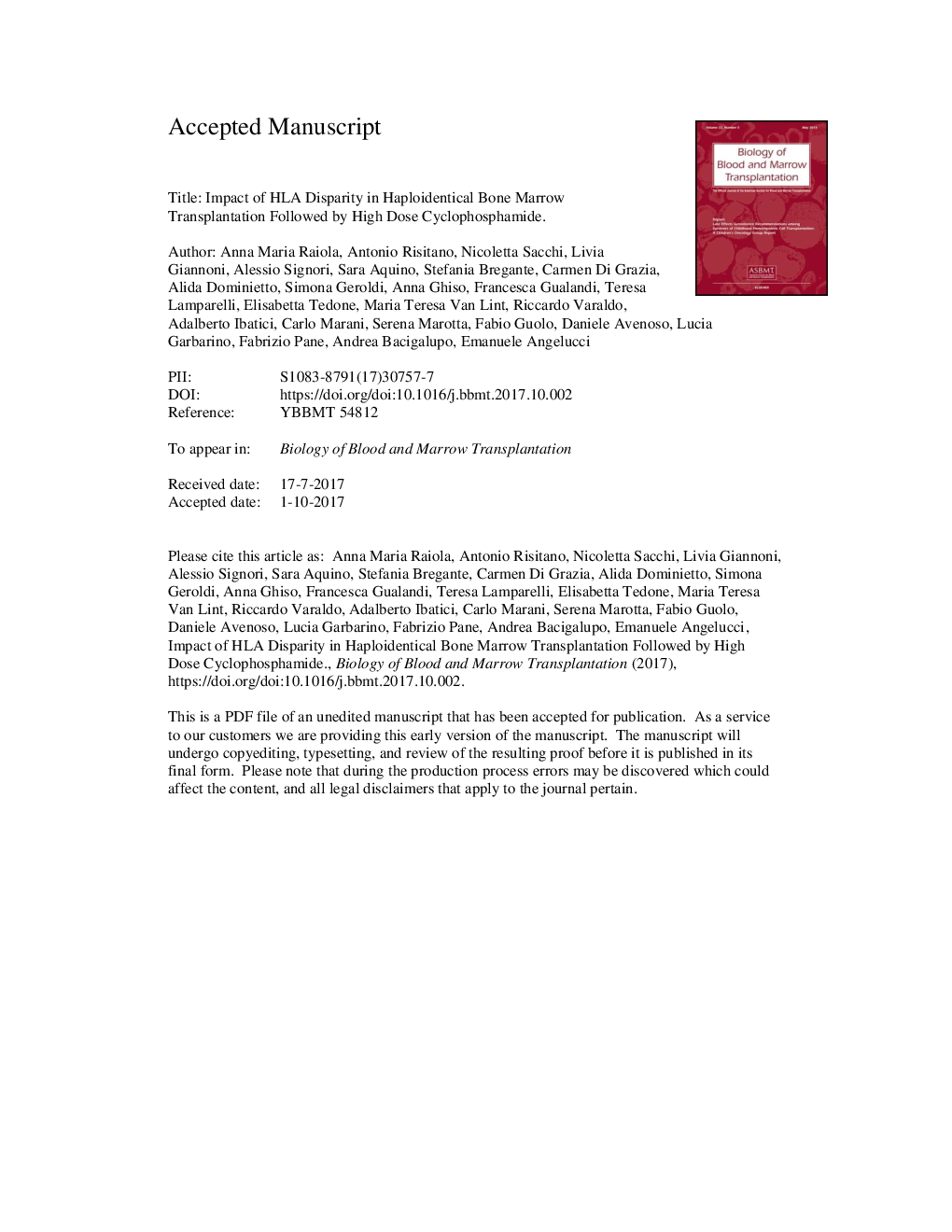| Article ID | Journal | Published Year | Pages | File Type |
|---|---|---|---|---|
| 8430564 | Biology of Blood and Marrow Transplantation | 2018 | 31 Pages |
Abstract
We studied the impact of HLA mismatching on the outcome of 318 consecutive patients who received an unmanipulated haploidentical bone marrow transplant, followed by post-transplant cyclophosphamide (PTCy). The number of HLA-mismatched antigens was tested for its impact on overall survival (OS) and nonrelapse mortality (NRM), whereas HLA mismatches in the graft-versus-host (GVH) direction were tested for prediction of graft-versus-host disease (GVHD and relapse. Finally, we studied whether graft rejection correlated with the number of HLA mismatched antigens in host-versus-graft (HVG) direction. Two hundred thirty-one donor-recipient pairs (72%) had 4/8 mismatches at the -A, -B, -C, -DRB1 HLA loci. HLA mismatches did not predict the 2-year OS (hazard ratio, .83; Pâ=â.58) and NRM (subhazard ratio, 1.08; Pâ=â.93). The cumulative incidence of acute GVHD (Pâ=â.13), 1-year chronic GVHD (Pâ=â.84), and relapse rate (Pâ=â.26) did not correlate with univectorial GVH mismatches. Similarly, no correlation was observed between the amount of HLA mismatch in the HVG direction and graft rejection. In multivariate analysis advanced disease at transplant was the strongest predictor of survival, NRM, relapse, and graft rejection. In conclusion, the degree of HLA mismatching should not be used as a criterion to select family haploidentical donors when using bone marrow as stem cell source and PTCy for GVHD prophylaxis.
Related Topics
Life Sciences
Biochemistry, Genetics and Molecular Biology
Cancer Research
Authors
Anna Maria Raiola, Antonio Risitano, Nicoletta Sacchi, Livia Giannoni, Alessio Signori, Sara Aquino, Stefania Bregante, Carmen Di Grazia, Alida Dominietto, Simona Geroldi, Anna Ghiso, Francesca Gualandi, Teresa Lamparelli, Elisabetta Tedone,
